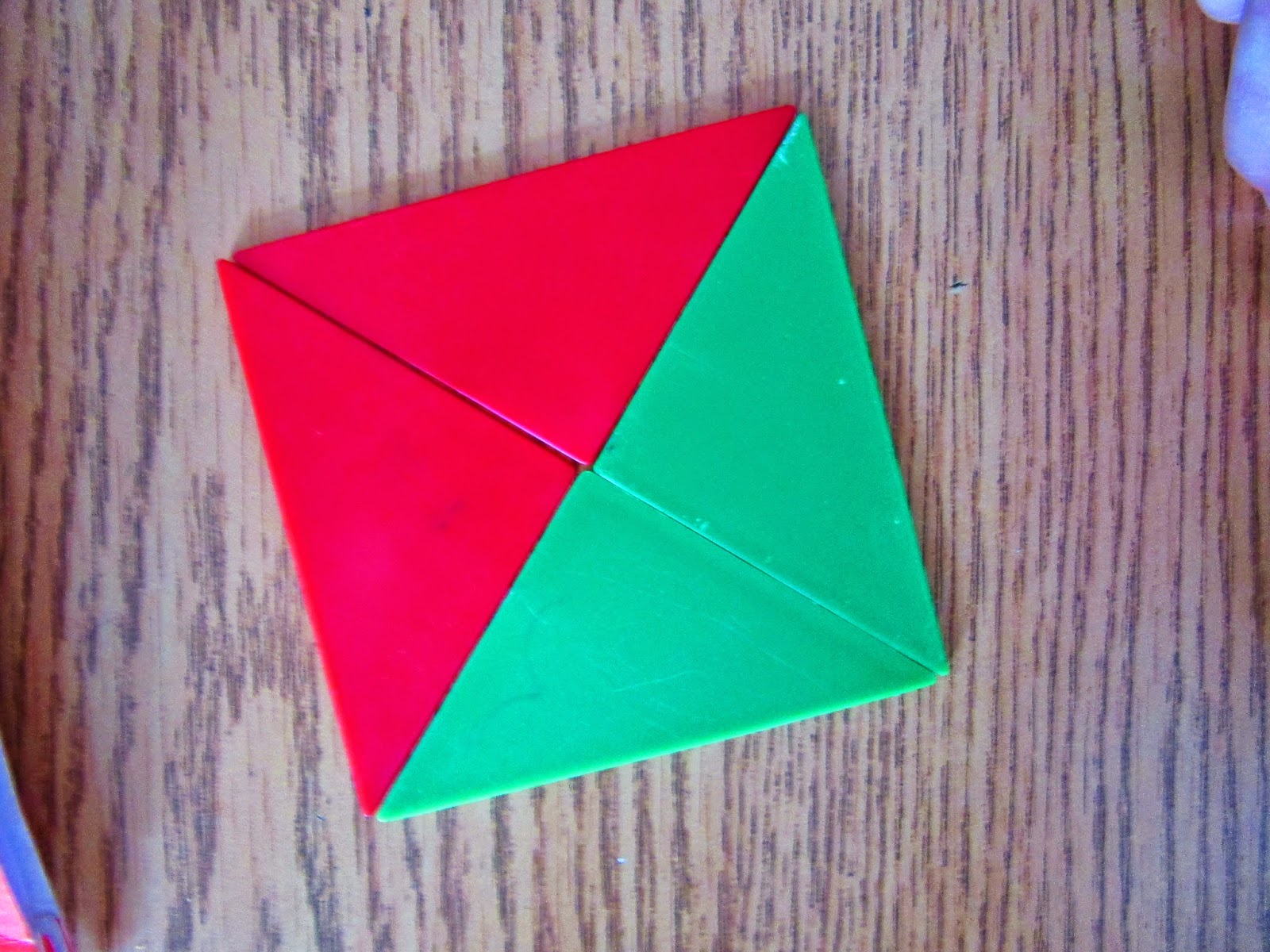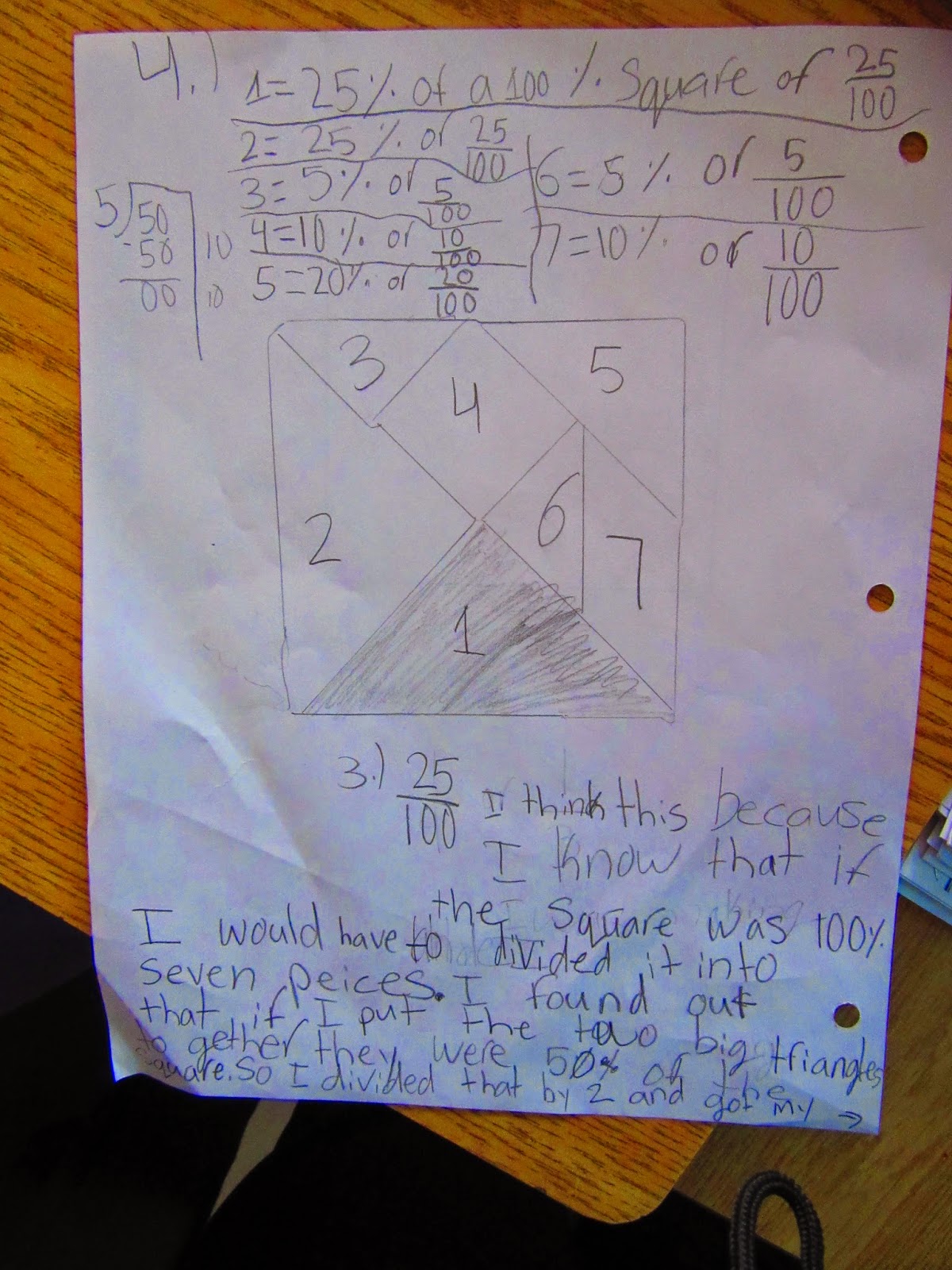
Math
DAY 1 FRACTIONS
There are many ways to solve the following problem, but most of the class used fractions to come up with their solution (even though I had not shared our next learning goal with them). Some used division and some used percent, but like Ben L. pointed out -"Percent and fractions are both parts of a whole, so they are the same thing!"..."Just like decimals!"

 |
| The girls knew that they could compare 3/5 and 4/5 easily, but they were not sure how to compare fractions with different denominators, so.... |
 |
| ,,,they made an area model and compared what the fractions looked like...they were on the right track. |
All groups were able to see that the sharing of subs was not fair! They could compare fractions like denominators, but they did not know how to compare fractions with different denominators. So that fuel our quest for knowledge in our next lesson!
 |
| While we worked on fraction problems, Mme Denbok's Math Group worked on Geometry problems |
DAY 2 A REAL INTRODUCTION TO FRACTIONS!
DAY 3 OF FRACTIONS:
REASSEMBLING THE SQUARE TILE WAS A CHALLENGE IN ITSELF!

PART WAY THROUGH, WE STOPPED TO CONSOLIDATE WHAT WE HAD DISCOVERED SO FAR. WE DEBATED THE FRACTIONAL VALUE OF THE BIG TRIANGLE, BUT FROM THE PICTURE ABOVE YOU CAN SEE THAT 1/4 TRIUMPHED OVER 1/7. WE RULED OUT 1/7 AS AN ANSWER BECAUSE WE REMEMBERED THAT EVEN THOUGH THE BIG TRIANGLE WAS ONE PIECE OUT OF SEVEN PIECES THE PIECES WERE NOT EQUAL IN SIZE, SO THE TRIANGLE DID NOT REPRESENT 1/7. HOWEVER, BY JOINING OUT TANGRAN SET WITH AN ELBOW PARTNER, WE COULD MAKE A WHOLE SQUARE OUT OF 4 BIG TRIANGLES, SO WE KNEW THAT ONE REPRESENT 1/4 OF THE TOTAL.
Different groups came up with different fractions to represent the big triangle. We remember from the previous day's consolidation that different, but equivalent, fractions could represent the same amount.
HIGHLIGHT OF THE LESSON: IT IS EASIER TO COMPARE FRACTIONS WHEN THEY HAVE LIKE DENOMINATORS, SO LAURENT FOUND A SHAPE THAT FIT EQUALLY INTO ALL THE OTHER SHAPES. SHE DIVIDED THE WHOLE INTO 16 SMALL TRIANGLES, AND EACH SHAPE WITHIN REPRESENTED A NUMBER OF 16THS OF THE WHOLE.

DAY 4 FRACTIONS: PIZZA SHARING COMPARING PARTS OF MULTIPLE WHOLES
WE BORROWED A PROBLEM FROM MR. WENDLER'S CLASS AGAIN AND CHANGED THE NAMES GO MME LEMIRE, MR. KEMSLEY AND MME BOSSE.
Everyone was able to solve the problem. They all used an area model to help them see and compare the different amounts. Some describe the amounts as pieces of pieces and some described them as fractions of piazzas.























































No comments:
Post a Comment